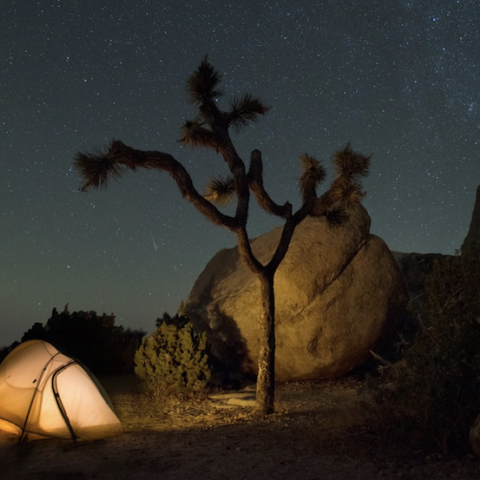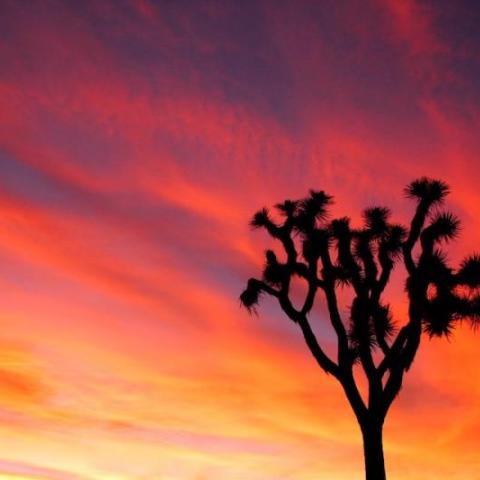
The Milky Way can be seen above Skull Rock thanks to the dark nighttime skies at Joshua Tree National Park/NPS, Hannah Schwalbe
After one of the most complex nominations seen by the International Dark-Sky Association, Joshua Tree National Park – with more than 20 million people of Southern California within an afternoon drive – was designated an International Dark Sky Park at a ceremony earlier this month.
“There is nothing more magical than to leave the hustle and bustle of Southern California after a busy week, come into the park, and take in the gift of dark skies,” Joshua Tree Superintendent David Smith said. “Camping in the backcountry of Joshua Tree, you can watch the Milky Way overhead. For so many of our visitors, national parks are where they come to discover the night.”
IDA established the International Dark Sky Places conservation program in 2001 to recognize excellent stewardship of the night sky. Designations are based on stringent outdoor lighting standards and innovative community outreach. Since the program began, 15 communities, 52 parks, 11 reserves, three sanctuaries and four dark sky-friendly developments have received International Dark Sky designations.
Applying for status as an International Dark Sky Park requires not only mitigating light pollution from within the park, but also partnering with communities outside the park to further reduce lighting impacts.
“The designation of Joshua Tree National Park is truly singular in the 16-year history of the International Dark Sky Places program,” IDA Executive Director J. Scott Feierabend said. “Never have we seen such a complex nomination, whose success is a testament to all those who have worked hard toward the successful management of this unique nighttime environment.”
Park physical scientist Luke Sabala was singled out for his tireless effort over several years in partnership with night sky stewards in the Morongo Basin. In addition, the efforts of neighboring communities were applauded as supporting dark skies in the park, which made this designation possible. Residents were encouraged to choose warm colors and moderate levels of outdoor lighting, to install “fully shielded” lights (shining only down, not up or out) to avoid glare, and to consider using motion detectors.
“Joshua Tree’s International Dark Sky Park status is a tremendous achievement,” said John Barentine, program manager for IDA. “That such a protected place exists within a few hours’ drive for over 22 million people ensures that starry nights and views of the Milky Way will continue to inspire Southern Californians for years to come.”
Joshua Tree received designation at the Silver Tier level, but that could be raised to Gold Tier with improvements to lighting not just in the Morongo Basin north of the park, but also in the Coachella Valley to the west and south.
“I think the best part of this designation has been the chance to work with all of our local communities to find ways that we can protect night skies – both at Joshua Tree and throughout the Morongo Basin,” Superintendent Smith said. “The Marine base has taken huge steps to protect our night skies, as have our park neighbors. We are committed to helping protect this vanishing resource for the next generation.”



 Support Essential Coverage of Essential Places
Support Essential Coverage of Essential Places






